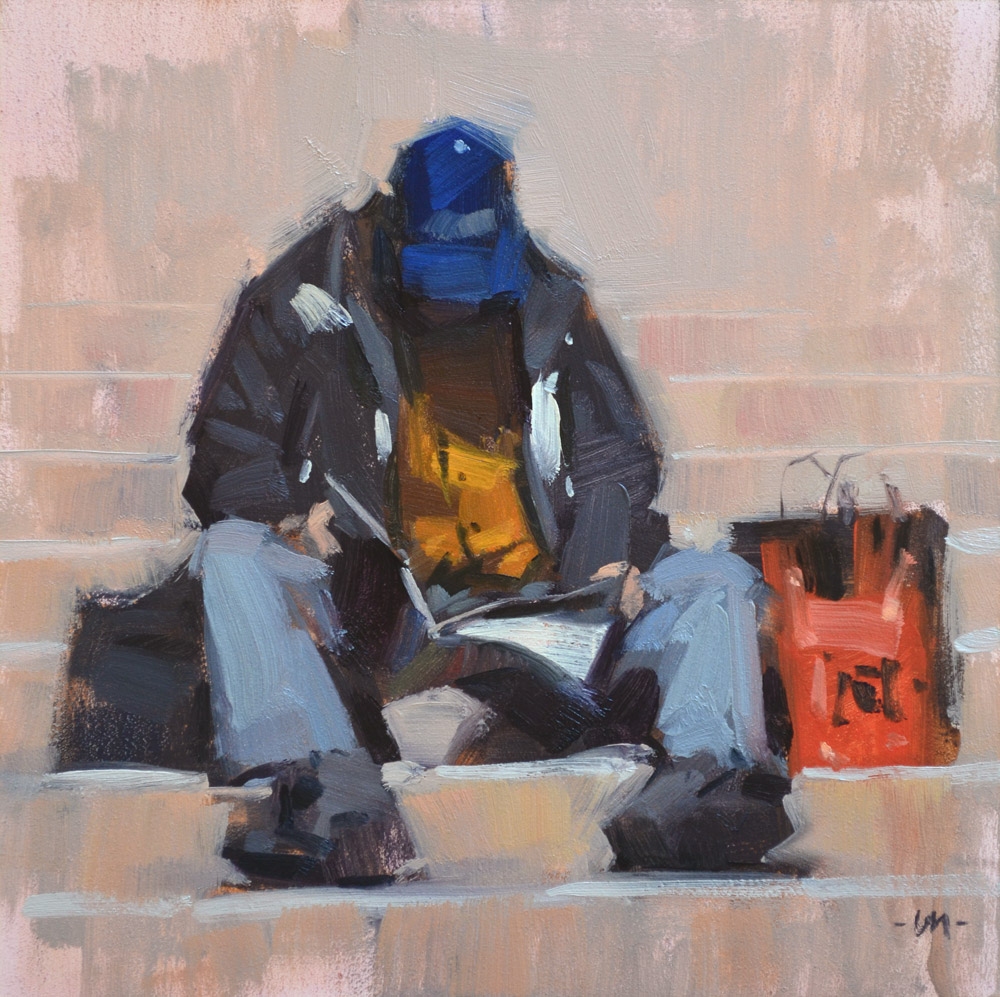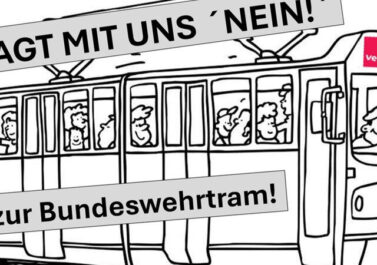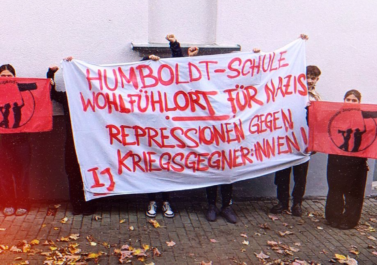
This is the second part of a series written by comrades from Wildcat, a collective from Germany, on the current moment. In the first part they developed a critique of ‘geopolitics’, in this article they look at the relation between the US and China on the global market.
‘Freedom instead of free trade!‘
(NATO Secretary General Stoltenberg)
On the 11th of September 2001, the USA was attacked on its own soil for the first time. The brief phase of the (imagined) unipolar world order was over. There had been a prelude though. In August 2000, the USS Cole was attacked and severely damaged in a harbour in Yemen by two suicide bombers. However, the USA’s real problems are not of military nature, but economic.
The huge trade deficit with China used to involve a huge net transfer of added value: in 1995, China had to trade 50 hours of Chinese labour for one hour of American labour – in 2014 it was only seven hours. [1] On top of that, China is displacing the USA from global markets in many areas. According to statista, in 2023 71% of the goods sold by Amazon worldwide came from China. History is now repeating itself. As long as the British economy dominated global trade, the government was in favour of ‘free trade’. With emerging competition, the UK became protectionist. Today, the US has lost its industrial and technological edge and is trying to protect the US economy with protectionism and sanctions. After the loss of its industrial supremacy, Britain based its ambitions to retain world power on its military and global logistics. Accordingly the USA today relies on the Dollar and its ‘digital-military-industrial complex’ – plus the ‘Western values’ behind which it rallies its allies.
However, the USA still has high trade deficits with China – in 2023, it exported goods worth 148 billion US dollars to China and imported almost 427 billion US Dollars worth of goods from there. The 500 largest US companies listed on the stock exchange generated 7.1% of their global turnover in the People’s Republic – more than in any other country beyond the home market; Japan followed in second place with 2.6%. Apple generates more than 20% of its turnover in China, Intel more than a quarter. Even the analysts at the Fed say that ‘a decoupling of the global production and trade processes from China is not in sight’. [2] China has enormous foreign exchange reserves worth more than three trillion US Dollars, a large part of which is held abroad, and is dependent on Western sales markets. China cannot tolerate the USA stifling its technological development, but it must proceed very cautiously.
The Biden government tries to pursue the process of decoupling from China by using industrial policy. It has initiated an American version of the energy transition, which also includes nuclear energy, in order to become independent of China in terms of ‘green technologies’. The chip production of all things, which is the most closely interwoven global sector, is supposed to be broken down into geopolitical blocs! [3]
Sanctions are the main instrument of US foreign policy…
The West’s dependence became evident during the 2020 pandemic. They didn’t even have sufficient production capacity for masks or medicines, let alone for semiconductors (‘chip crisis’). Entrepreneurs had become accustomed to having everything delivered from Asia at any time. Now the slogan of ‘nearshoring’ appeared, meaning, it is considered favourable and safer to keep production nearby, even if it is more expensive. With the war in Ukraine and the increasing confrontation with China, this became ‘friend-shoring’: promoting ‘strategically important’ production in one’s own country and excluding enemies from technical developments or complex technology. To enforce this economic policy, the USA has been imposing unilateral sanctions (not covered by the UN) in order to harm states that it considers to be enemies. As well as ‘secondary sanctions’ against states that do not comply with these sanctions. 29% of the global economy is affected by sanctions, and the trend is rising. In the rarest of cases, sanctions have contributed to a change in the policies of the sanctioned governments, but they often starved the population. [4] Sanctioned goods can be delivered in a roundabout way: China is increasingly exporting via neighbouring countries; more than 80% of the solar panels imported into the USA officially come from Vietnam, Malaysia, Thailand and Cambodia. Russia imports sanctioned goods via Turkey and former Soviet states, and exports gas via TurkStream etc.. Financial sanctions are more effective, e.g. the exclusion of Russia from the Swift system. This is because more than 60% of international trade is still transacted in Dollars. In 2024, Russia’s trade with China and Turkey also declined because the USA threatened Chinese and Turkish banks with secondary sanctions.
… and also harm the EU
‘President Donald Trump had already put pressure on European allies with punitive tariffs because of their oil and gas imports from Russia. But it was his successor Joe Biden who announced to the press on the 2nd of February 2022 – before Russia’s invasion of Ukraine – that the use of the Nord Stream 2 pipeline would be prevented by the USA. … The energy war ‘increases the prices of all fossil fuels and therefore also the prices for many foodstuffs and industrial goods.’ (Birgit Mahnkopf) [5] Since the Ukraine war and the tightened sanctions against Russia, the European economy has been suffering from higher energy prices, increased transport costs and shrinking sales markets. In addition, the industrial policy measures of the USA are motivating European companies to relocate to the USA, while at the same time, some companies are increasing their involvement in China. China was Germany’s most important trade partner for eight years. In the first half of 2024, the USA overtook China again for the first time due to liquefied natural gas (LNG) imports.
However, the USA is not a secure energy supplier. Trade in LNG, in contrast to delivery via a pipeline, is very strongly dictated by price fluctuations. In July 2024, Russia was even close to overtaking the USA as the most important supplier to western Europe. [6] And while the EU is in recession, in July 2024 the World Bank upgraded Russia to a ‘high-income country’; real GDP per capita there grew by 3.6% in 2023, ‘the most important factors that contributed to economic growth in 2023 include trade (+6.8%), the financial sector (+8.7%) and the construction industry (+6.6%). [7] If the Russian sales market collapses, the EU needs China all the more. This is what the dispute over ‘decoupling’ is about – meaning, the conflict over the economic and political disconnection from China which the USA demands. For the time being, people have agreed to what Ursula von der Leyen coined ‘derisking’; already in 2019 she had labelled China a ‘systemic rival’.
Since 2019, the USA has been insisting that no Huawei components should be installed in 5G networks. This does not have a major impact in the USA itself because there is hardly any 5G network there. Why Huawei should be dangerous for 5G networks but not for 4G networks is still unknown. The German government claims that Huawei will soon be banned from the networks, but is not actually enforcing this ban. The network operators have not yet had to dismantle anything and are also allowed to continue installing Huawei antennas in the coming years. In view of the fact that practically all smartphones are assembled in China or with Chinese parts, this is not an entirely stupid solution. [8]
The balance of power in the financial system is completely different. Although the US economy is weakening, the Fed is still keeping interest rates high. This attracts capital and strengthens the Dollar. The ECB is therefore unable to cut interest rates further, even though the EU is in recession.
The Dollar…
Since 2000, the currency reserves held by central banks in US Dollars have fallen by around half and continue to fall – the extreme rise in the price of gold is the most visible sign of this. The Ukraine war has stabilised the battered Dollar through rising energy prices and massive liquefied natural gas exports from the USA. [9] In the medium term, the militarisation of the global financial system poses a massive threat to its position as a reserve currency: following the Russian invasion, the USA, the EU, Japan and Canada froze assets of the Russian central bank worth more than 300 billion US Dollars. At the end of January 2024, they decided to ‘hand over’ these frozen assets to Ukraine. Why should countries still rely on the ‘safe haven’ of
US government bonds when even the Dollar reserves of central banks can be confiscated? By weaponising the Dollar, the USA is accelerating the de-dollarisation efforts of the BRICS states. They are currently trying to create an independent financial platform, the so-called ‘Brics Bridge’.
… and Western values
When everything else falls away, values and rules remain. For decades, cultural history seminars at US universities ran according to the motto ‘From Plato to NATO’. The ‘dynamic West’ imagined itself, in contrast to the ‘regressive Orient’, as the inventor and defender of democracy in a direct line from the Athenian Agora to the present day. Philosophically, technologically and militarily superior and white. But Greek culture in particular emerged in a diverse, ‘colourful’ Mediterranean region. And from the 8th to the 13th century, the Islamic world far surpassed the barbaric West. In his text ‘The Universality of Marx ‘ [16] , Loren Goldner criticised such Western ideas in 1989, but at the same time he also opposed Samir Amin, who emphasised the decoupling of the ‘global South’. In his essay Loren also dealt with the now famous book ‘Orientalism’ by the Palestinian Eward Said, which was published in the same year. Said imagines cultures ‘as hermetically-sealed “texts”’, which are ‘inevitably disturbed and lose their quality’ through exchange and mixing. Said’s ideas are a ‘quintessential statement of a culturalism that, with a pretense of radicalism, has become rampant in the past two decades’. This old criticism is more important today than ever. When ‘the West’, on one hand, ‘mutilates democracy to the point of recognisability, but continues to celebrate it as the unique selling point of the West’ (Lutz Herden in freitag, 17.7.2024), and the West’s opponents, on the other hand, refer to ‘postcolonial studies’ in the wake of Said, then universalism – and thus the possibility of revolution – falls by the wayside.
With the global crisis of 2008, the term ‘rule-based order’ (RBO) found its way into the official political discourse of the West. For the first time in an appeal to China to make its contribution to this ‘order’. In 2015, the Obama administration then claimed in its National Security Strategy (NSS) that US supremacy is indispensable for the RBO. The Biden administration’s NSS of 2022 names China and Russia as ‘enemies of the RBO’. All Western military alliances today refer to the RBO. According to Wikipedia, behind this term are ‘concepts of partly opposing views and without a clear definition.’ The USA and Australia understand it to mean global US hegemony with its military alliances in the Pacific region. Other states reject the term altogether and base their definition on international law, in contrast to the RBO. [10] Paradoxically, the USA is breaking the rules it has established itself and that have been agreed on, for example in the
the World Trade Organisation. Biden imposed the punitive tariffs on Chinese e-cars without appealing to the WTO – China is taking the matter to the WTO.
China’s rise
China had a 3% share of global industrial exports in 1995 and 20% in 2020. [18] For a long time, the ‘workbench of the world’ exported cheap copies of Western consumer products. Since then, it has become an integral part of the global production chain, manufacturing more sophisticated industrial goods. During this period China has copied the most hideous capitalist business models so successfully that it has become ‘hypercompetitive’ on many levels (Baidu, Temu, TikTok, Shein ….). Its industrial production exceeds that of the next nine countries: according to the OECD, China accounts for 35% of global production, the USA, Japan, Germany, India, Korea, Italy, France and Taiwan together account for 34% (out of which the USA accounts for 12%). However, China ‘only’ accounts for 29% of value added, the nine countries together account for 40% (USA 16%). China is fighting to move up the value chain. The global crisis of 2008 onwards was a fork in the road. In contrast to the austerity policy in the West, China quickly emerged from the crisis with massive state intervention. And in contrast to the previous ‘opening policy’ towards the rule of law and Western-style trade unions Xi Jinping implemented an authoritarian turnaround.
Belt and Road
The Belt and Road Initiative (BRI) combines the classic strategy of Eurasian land power with a global network of harbours. One of its six ‘corridors’ provides China with access to the Indian Ocean, crossing the whole length of Pakistan. China tries to connect with the Eurasian landmass and Africa through a new network of railways, oil and gas pipelines and industrial infrastructure (power plants and electricity grids). Compared to sea transport, road and rail links are much faster and less exposed to the dangers of a blockade by the USA. ‘China could succeed in doing what all hegemonic world powers have been trying to do for 500 years: dominate the tricontinental landmass, on which 70% of the world’s population live.’ (Mahnkopf, ibid.)
In 2021, China was connected via 78 railway lines to 180 cities in 23 European countries; the number of trains had multiplied from 1900 in 2016 to 14,000. The most important route, the ‘Northern Corridor’, runs through Russia. Since the Ukraine war and the sanctions, this has been used less and instead goods are transported via the ‘Central’ route (through the Caspian Sea) and the ‘southern corridor’ (through Turkey). These two routes are longer and more expensive due to more frequent reloading and the many borders. Nevertheless, container train transport between China and Europe continued to grow to over 17,000 trains in 2023. Since the Houthi attacks in the Red Sea, container train transport through Russia has even increased. [11]
China is also expanding maritime logistics with new seaports in Africa, Asia and Latin America (Cosco is building the largest deep-sea port in South America). Chinese shipping companies are becoming increasingly involved in European ports (for example, Cosco owns 100% of the Piraeus Terminal in Greece and 90% of the Zeebrugge terminal in Belgium).
The SCO
In the shadow of the war in Ukraine and Gaza cooperation between the BRICS states against the G7 has intensified. Their increasing strength is reflected in the failure of the economic sanctions against Russia – less than a quarter of UN members are participating. China is also expanding the regional alliance ‘Shanghai Cooperation Organisation’ (SCO) based in Beijing. The SCO was formed in 2001 from the ‘Shanghai Five’, which was founded five years earlier. Today, 26 countries belong to it, including China, India, Iran and Russia Pakistan, Kyrgyzstan, Tajikistan, Belarus, Uzbekistan and Kazakhstan. A summit was held there at the beginning of July, which Erdoğan also attended. Turkey (a NATO country!) wants to join both the BRICS and the SCO. These countries, all of which have authoritarian governments, are so far more of an ‘anti-West’ and not (yet) a new political bloc. Both Xi and Putin emphasised the importance of Eurasia in their statements at the summit. Meanwhile, Russian and Chinese influence is also growing in Africa.
Footnotes
[1]
Rémy Herrera, Zhiming Long, Zhixuan Feng, Bangxi Li: ‘Turning One’s Loss Into a Win? The US Trade War With China in Perspective’ Research in Political Economy, 2023, 39, pp. 31-50, hal.science/
[2]
FEDS Notes, 2nd of February 2024: ‘Assessing China’s Efforts to Increase SelfReliance’ federalreserve.gov
[3]
It is highly controversial whether this is even possible; see our articles on the chip industry in Wildcats 108 and 110, in the next issue we will come back to this
[4]
On sanctions, see in detail articles in Wildcat 110, see also the IMI study on sanctions: ‘Arsenal of the law of the fist’ and more recently: ‘How four U.S. presidents unleashed economic warfare across the globe’ (Washington Post, 25th of July 2024)
[5]
Birgit Mahnkopf ‘The Battle for Eurasia – From globalisation back to geopolitics’ in Blätter, October 2022
[6]
‘Russian LNG gaining influence in Europe’ US ships sail to Asia because Asian consumers pay higher prices – Russian LNG supplies have been stable over the last two years (Bloomberg, 30th of July 2024)
[7]
Worldbank Group 2nd of July 2024 ‘Russia was classified as a high-income country’
[8]
See Christoph Jehle ‘Huawei ban: British 5G users suffer while Germany plays tricks’; telepolis 7th of August 2024
[9]
A very good analysis of the economic background of the Ukraine war is provided by Oliver Schlaudt and Daniel Burnfin: ‘On the connection between war and capitalism: The the basics of the war economy’, in freitag issue 22/2024
[10]
We translated the text twenty years ago for our discussion in Zircular 63. You can find it online: ‘Marx and Universality’ – wildcat-www.de
[11]
Centre for Security Studies, Zuerich, Nr. 317: “Die regelbasierte Ordnung: Divergierdende Auffassungen” is worth reading and so is the Wikipedia entry on RBO
[12]
Michael Roberts: “Bejings Aufstieg zur einzigen Supermacht im Reich der Produktion”, telepolis, 29th of January 2024
[13]
Figures according to Andreea Brinza »Putin’s War Has Killed China’s Eurasian Railway Dreams – The iron silk road was a key part of the Belt and Road Initiative« in foreign policy.com, 1st of March 2022; »Overview of China-Europe rail freight data 2023«



